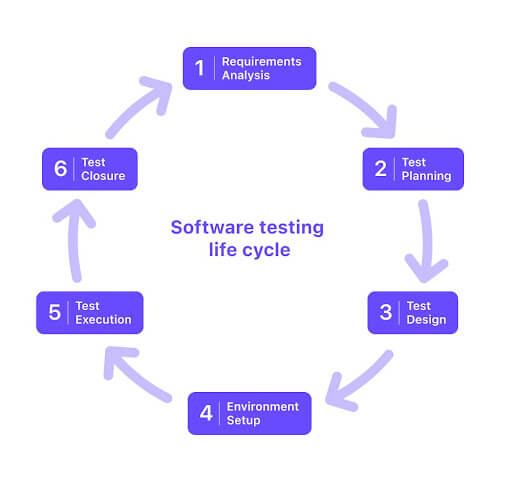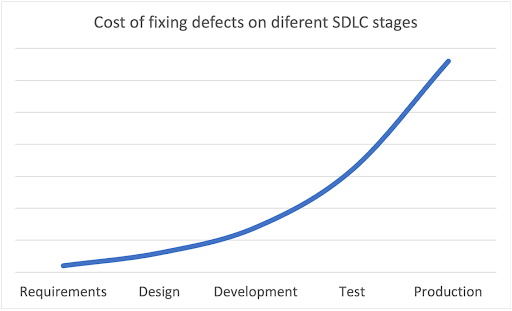3 Ways to Accelerate Your Software Testing Life Cycle


What are the most effective ways to ensure software quality and deliver a product on time? This question is asked by almost all companies engaged in software development and for which it is important to bring value to their clients without defects. As a software development life cycle becomes more and more complex, testing can become a bottleneck that slows down the overall process. In order to accelerate it, multiple strategies and methods were created that organizations can adopt. This article will help you to understand key terms regarding testing life cycle and proven ways to optimize and speed it up.

What is software testing life cycle (STLC)?
Software testing life cycle (STLC) is an essential part of a software development life cycle (SDLC). It represents a sequence of actions performed in the software testing process to ensure that the software is functional, reliable, and meets the desired quality standards. These goals can be shortly referred to as verification and validation.
- Verification is a process of evaluating a product to check if it has been built according to the specified requirements and design specifications. An example of a tool supporting and automating verification is qodo (formerly Codium) (https://www.qodo.ai/).
- Validation is a process of checking if a software product meets the exact needs and expectations of its customers.
Software testing life cycle typically includes six phases.
Key phases of software testing life cycle

1. Requirements Analysis
In this phase, the requirements for the software are analyzed, and the testing team creates a test plan based on those requirements. During this phase, interactions with stakeholders can take place in order to understand requirements in detail.
2. Test Planning
In this phase, the testing team creates a detailed test plan that includes the testing approach, test environment, as well as resource estimates and test schedules.
3. Test Design
In this phase, the testing team creates the test cases based on requirements and the test plan from the previous phase. Test data is also prepared during this step.
4. Environment Setup
In this phase, hardware and software development requirement lists are prepared, and a test environment is set up. This step can be made in parallel with step #3. Environment setup is not necessarily performed by the testing team but may also be provided by the development team. In this case, the testing team is still required to perform a readiness test (or smoke test) on the given environment.
5. Test Execution
In this phase, the actual testing takes place. The testing team executes the test cases according to the plan, document results, and report any defects they find. Once the defects are fixed, defect retesting and regression testing are executed. The goal of defect retesting is to ensure that the defect has really been fixed. Regression testing is performed to confirm that changes made to the software do not negatively impact previously working functionality.
6. Test Closure
In this final phase, the testing team evaluates the success of the testing effort, summarizes the test results, and creates a final test report.
During this phase, the testing team also meets for retrospectives – their goal is to discuss lessons learned from this testing cycle and ideas and strategies to be implemented in the next cycles. This is a very important activity in the test closure phase as it helps to minimize bottlenecks in the process and to accelerate the entire testing life cycle.
Ways to speed up software testing
Sometimes an intention to make processes faster and more agile leads to not completely correct results. Below we will discuss three methods to speed up the testing life cycle without sacrificing the quality of the final product.
1. Shift Left Testing
Shifting left means moving the testing process earlier in the software development life cycle. Let’s answer a simple question. What is testing needed for? The goal of testing is to get some feedback on what has been implemented. However, traditionally, testing occurs at the end of the development process after product requirements are already defined, and tasks for the development team are set up. Feedback in this model is slow and happens late in the entire development process.
On the other hand, the cost of finding and fixing defects is increasing over time, and at the testing stage, it is almost at maximum. The graph below describes the dependence of costs on a development stage during which a defect is found. The same graph can be found in the book “Foundations of Software Testing.”

Why is it so? Defects can creep in not only during the development stage but also earlier in the development process, and the most dangerous defects are those that were made while writing the requirements. The most extreme case is when such defects are found already after testing. Then we will have to roll back to the very beginning of the development process, rewrite wrong requirements, set new development tasks, implement them, and finally test again. This is where the huge amount of wasted time comes from. But there are testing approaches that allow you to avoid this: you can start testing a feature in advance. Shift left testing is a testing approach in which testers are involved in the life cycle of a product at an earlier stage, and the earlier, the better.
For example, shift left testing can be started already during the requirements analysis phase. Requirements are then reviewed not only by developers but also by testers. In addition, testers participate in the grooming (an open discussion between the development team and product owner to help the team gain a better understanding of the product functionality) and development stage.
So, when it comes to the stage of active testing, there are, firstly, already fewer bugs because they were caught in advance, and secondly, there is already a list of ready-made manual test cases with which the feature can be tested. This shortens the testing phase and delivery time of features into production.
2. Continuous Testing and Automation
Test automation involves using software tools to automate the testing process. This can significantly accelerate the testing process by reducing the time and effort required for manual testing. Test automation can be applied to a variety of testing types, including unit testing, integration testing, and performance testing. Automating repetitive test cases, regression testing, and other routine testing tasks can free up time for manual testers to focus on more complex and exploratory testing.
Continuous testing involves integrating testing into the continuous integration and continuous delivery (CI/CD) pipeline. This means that tests are run automatically whenever changes are made to the codebase, ensuring that issues are identified early and preventing defects from being introduced into the production environment. Continuous testing can help teams catch issues earlier in the development process, reduce the time required for manual testing, and improve overall software quality.
In order to speed up the test cycle, these approaches can be integrated. Most CI systems have the functionality to automate the launch of automated tests and send testing team alerts for run events. Every team member has the possibility to look then at the results of automated tests in the system. It is important to mention that the results of autotests versus manual tests should be easily distinguishable and ideally should be redirected to different alert channels. Otherwise, the team could be very fast overwhelmed by the number of alerts generated by automated tests.
3. Defects Prioritization and Leveraging Organized Team Collaboration
Another useful approach for accelerating your testing life cycle is to optimize the process of prioritization of defects being found.
Prioritizing means identifying the most critical bugs so that they can be addressed in an order that maximizes the benefits to the software development process. Defects can be prioritized based on a number of factors, including severity, frequency, customer impact, etc.
At the requirements stage, priorities are determined by the business customer – he knows better what and in what order is needed for the development of the product. But after rolling out to the development stage, when tasks to fix defects are set up, the tester defines their priorities. Sometimes there is a need to urgently change the priorities of the tasks; for example, when a minor defect is necessary to fix first in order to address another bigger defect. One way (which many choose) is to contact the development team immediately to ask to change tasks priorities, but this distracts developers and may slow them down. Therefore, the better approach would be to contact them only at certain times – for example, after the code freeze, up to five times a day. This would help to avoid reducing developers’ productivity with sudden requests, get rid of downtime, and increase time for analysts and developers to work on their tasks.

Moreover, since tasks do not longer appear spontaneously to developers, everyone always knows who has what load, who has previously worked on the specific task, and who will be able to complete it faster. As a result, it is easier to plan and understand whether there is enough time to prepare the release on schedule or not.
In conclusion, accelerating the software testing life cycle requires a combination of strategies that address different aspects of the testing process. One of the first and the most important steps towards embedding speed and quality in STLC starts with changing the mindset of the entire team. The testing team should think not only about the fact that the product works as it should but also about how to do it better. This is a good vaccine against the burnout of specialists and an excellent engine for product progress and testing process optimization. The second step is an audit of the current testing life cycle. The audit will show bottlenecks and promising areas for improvement. The final step is the implementation of the new approaches.



